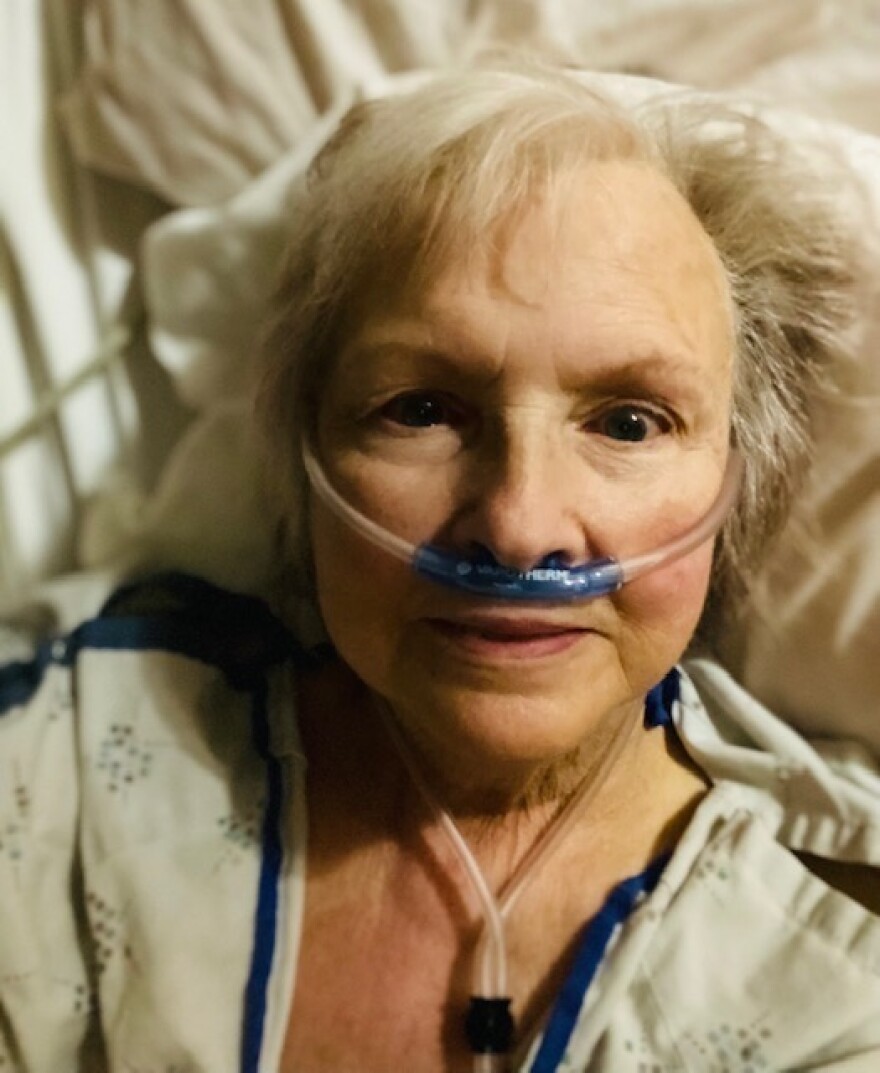Even in the midst of yet another surge, with case counts hitting historic highs, our collective pandemic fatigue is palpable. School boards are suing to overturn mask mandates in elementary schools; vaccination rates have largely stalled. And as people chafe against further mitigations, many seem to be taking comfort in evidence that omicron may cause less severe disease than past variants.
But medical professionals warn that omicron is still dangerous for many people. And when it comes to fatigue, perhaps no one is more tired than the frontline medical workers who’ve been fighting the virus since March 2020.
Hayley Aeschleman is a primary charge nurse in the critical care unit at OSF St. Joseph Medical Center in Bloomington. While the omicron variant may cause milder symptoms for some, Aeschleman has seen firsthand that’s not the case for everyone.
“Vulnerable populations of people are still getting very sick with this variant and some of them are still dying,” Aeschleman said.
In fact, 20 McLean County residents have died of COVID in January alone, bringing the county’s death toll since the start of the pandemic to 326. For medical workers, that number represents 326 bedsides, manned round the clock. It represents 326 connections that have formed between patients and caregivers. And it represents 326 losses that must be grieved.
Those numbers take a toll.
“We have these intimate moments with these patients,” Aeschleman said. “And, so, it is really hard on you emotionally when you've given everything that you feel like you possibly can for these people that have been here for months, and then you end up losing them.”
On average, COVID patients spend 40 days in the hospital. Because of infectious disease protocols, much of that time is spent in isolation wards, meaning patients can’t have visitors from the outside world. Hospital staff becomes a patient’s lifeline. And Aeschleman said it’s not uncommon for intense bonds to form.
“They become somewhat of our family while we're here at work,” she said.
That was the case for Deanna Frautschi, who spent a relatively brief 11 days in the ICU at Carle BroMenn. Frautschi is one of a vulnerable population who, because of preexisting conditions, are more susceptible to COVID-19. Frautschi has been undergoing chemotherapy for the past year to treat non-Hodgkins’s lymphoma. When she contracted COVID last month, it hit her hard.
“Because of that compromised immune system, I just went way down, and my white blood cells were basically gone,” Frautschi said.
Her condition deteriorated so quickly, that had her husband not rushed her to the ER, Frautschi doesn’t believe she would’ve survived. Once stabilized in the ICU, she was left with only her iPhone and the staff to keep her company.

Frautschi was amazed by the willingness of everyone, from maintenance staff to respiratory therapists, to chat with her, get to know her, make her feel alive.
“How do they do this? Why did they do it? And how can they do it every day with a variety of people that are in there, knowing that some won't be as fortunate as me to go out that front door,” Frautschi said.
Aeschleman said nurses get to know patients as best they can, so as to provide an element of comfort and familiarity for those in isolation. Nurses often draw on what they were able to learn from patients themselves, before they were placed in medically induced comas. When a patient can no longer communicate, nurses rely on family members for helpful information, like music preferences.
Aeschleman recalls a patient who loved rock music. “Their family so that was really important to them. So, while they were in their medically induced coma, you know, we just kind of jammed out with them.”
When prayer plays an important role in a patient’s life, nurses pray with them, Aeschleman said. And when patients die, nurses turn to prayer themselves.
“Our pastoral care here is really great,” she said of OSF. “And they'll come in (and) pray with us and pray over the patients.”
Aeschleman said nurses lean on one another after a death, often gathering to share memories of a patient who’s passed. It’s part of an informal process of grieving they’ve established to help each other cope with a loss.
The nurses also send cards to patients’ families, sharing remembrances of a loved one during their final days. Aeschleman said it’s a small gesture, but it brings seems to bring comfort to the families and to the nurses themselves.
But then the process begins again: another patient, another relationship, another loss to grieve. For nearly two years now, that has been the daily reality for Aeschleman and frontline medical workers around the globe.
“It’s what we're here for,” she said. “And we're here, still here, for our patients. And we'll still give them everything that we can,”
But yes, Aeschelman said, “It’s emotionally exhausting.”


